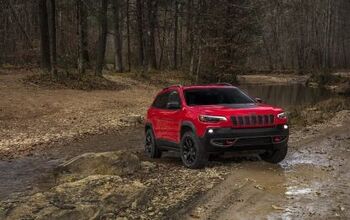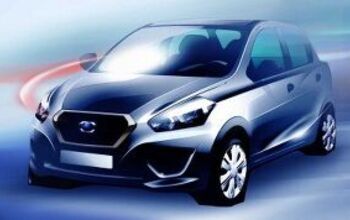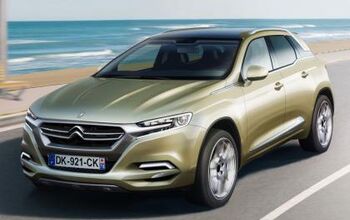F1: First Look, New Look
After months of testing, teasing, politics and drama, Formula One’s 2007 season has finally sailed past the green flag. If last weekend’s thunder down under is any indication, the 2007 season may (or may not) provide a radical change from the increasing (not to say relentless) routine of F1 seasons past. There are new drivers driving new cars for new teams, and “old” drivers driving new cars for new teams. And thanks to rule changes, F1 racing technology has also altered in several important ways. Here’s the inside dope:
Although new FIA legislation has led to some major technological differences from seasons past, few of these are obvious to the naked eye. First and foremost, the much-decried “engine freeze” is now a fait accompli. All F1 powerplants are hereby rev-limited to 19,000 rpm. No further mechanical development is allowed. Other than attendant tuning tweaks, the 2007 engines must be identical to the units raced at the last two GP’s of 2006.
Rumor has it that the teams’ engines are, power-wise, more similar than ever before (as was the governing body’s intention). Some experts suggest that only 10hp separates the most and least powerful engines on the grid. This, of course, places ever-more emphasis on aerodynamic performance, which continues to evolve at a rapid pace.
As for overall vehicle design, according to the Concorde Agreement (F1’s governing document), teams own the intellectual property rights to their car’s chassis. In other words, “customer” cars are disallowed. Skirting the new rules, the Toro Rosso and Super Aguri teams have chosen to field cars which are close derivatives of their A-teams’ designs.
The competitiveness shown by Super Aguri’s SA07 entry in Oz promises an acrimonious debate, scheduled for the arbitration docket once the European season begins.
On the tire front, ‘07 showcases the winner of the long-running tire war: Bridgestone. While many consider Michelin’s departure as a hit to the sport’s competitive nature, the FIA can now regulate vehicle performance by stipulating the level of grip provided by the tires. The change is bound to lower cornering speeds and increase emphasis on driver ability.
The regulations concerning tire use have also changed. Bridgestone will produce four dry compounds to be used throughout the season. At any given race, F1 teams will have two tire compound options (both chosen by Bridgestone). Teams will also be required to use both specifications of dry tire during the race, unless a wet tire is used.
In order to increase greater fan involvement, the FIA has asked Bridgestone to produce tires that are “visually distinctive” from one another. The softer of the two available compounds, the so-called “option” tire, is clearly marked as such.
This year’s F1 grid also sees a plethora of personnel changes. The headline: two-time and defending world champion Fernando Alonso has abandoned his reliable blue and yellow Renault for an unreliable silver arrows-throwback McLaren, displacing Big Mac driver Kimi Raikkonen. Raikkonen, widely considered the fastest man on the grid, has taken his title challenge to Ferrari.
The Scuderia Ferrari team has transformed itself in the off-season. Ross Brawn (technical director), Nigel Stepney (race engineer) and Michael Schumacher (expert in questionable and effective race tactics) have all left for greener pastures. Only a handful of Ferrari’s race-tested, battle-hardened upper-level team members remain.
And so to Oz, where, despite all the alterations, it was business as usual for Ferrari.
Starting from the pole position, Kimi Raikkonen’s Fezza dismissed all comers with the same sort of clinical precision the team’s former German driver displayed for the last ten years or so. Raikkonen led every lap save the few following his pit stops. It was solid confirmation of the team’s series-leading off-season pace, offering the terrible prospect (at least for non-Ferrari fans) of yet another season of potential domination by the Italians.
Anyway, in traditional Finnish fashion, Raikkonen competed in two races in the last two weeks. Before the F1 circus, Raikkonen entered and won a 24k snowmobile race. Kimi raced under the oh-so-telling nom-de-guerre James Hunt, the bon vivant whose epic off-track shenanigans make Kimi’s legendary exploits look positively tame.
This is not to say Raikkonen is Schumacher. The Finn is a highly volatile guy; it remains to be seen if his hard-partying lifestyle (read: drinking bottles of vodka and exposing himself to strippers) will prove detrimental to his title hopes.
Finally, the calendar has undergone some tweaks. Spa-Francorchamps returns after a one-year hiatus for track and pit facility upgrades. The San Marino GP at Imola has been dropped and is unlikely to return.
All these changes were designed to reinvigorate the sport after Schumacher’s departure, and set the stage for a new crop of F1 superstars. If you look at the struggle beneath Raikkonen, the Australian GP indicates that it sounds crazy, but it just might work.
More by Mitchell Yelverton
Latest Car Reviews
Read moreLatest Product Reviews
Read moreRecent Comments
- Jalop1991 In a manner similar to PHEV being the correct answer, I declare RPVs to be the correct answer here.We're doing it with certain aircraft; why not with cars on the ground, using hardware and tools like Telsa's "FSD" or GM's "SuperCruise" as the base?Take the local Uber driver out of the car, and put him in a professional centralized environment from where he drives me around. The system and the individual car can have awareness as well as gates, but he's responsible for the driving.Put the tech into my car, and let me buy it as needed. I need someone else to drive me home; hit the button and voila, I've hired a driver for the moment. I don't want to drive 11 hours to my vacation spot; hire the remote pilot for that. When I get there, I have my car and he's still at his normal location, piloting cars for other people.The system would allow for driver rest period, like what's required for truckers, so I might end up with multiple people driving me to the coast. I don't care. And they don't have to be physically with me, therefore they can be way cheaper.Charge taxi-type per-mile rates. For long drives, offer per-trip rates. Offer subscriptions, including miles/hours. Whatever.(And for grins, dress the remote pilots all as Johnnie.)Start this out with big rigs. Take the trucker away from the long haul driving, and let him be there for emergencies and the short haul parts of the trip.And in a manner similar to PHEVs being discredited, I fully expect to be razzed for this brilliant idea (not unlike how Alan Kay wasn't recognized until many many years later for his Dynabook vision).
- B-BodyBuick84 Not afraid of AV's as I highly doubt they will ever be %100 viable for our roads. Stop-and-go downtown city or rush hour highway traffic? I can see that, but otherwise there's simply too many variables. Bad weather conditions, faded road lines or markings, reflective surfaces with glare, etc. There's also the issue of cultural norms. About a decade ago there was actually an online test called 'The Morality Machine' one could do online where you were in control of an AV and choose what action to take when a crash was inevitable. I think something like 2.5 million people across the world participated? For example, do you hit and most likely kill the elderly couple strolling across the crosswalk or crash the vehicle into a cement barrier and almost certainly cause the death of the vehicle occupants? What if it's a parent and child? In N. America 98% of people choose to hit the elderly couple and save themselves while in Asia, the exact opposite happened where 98% choose to hit the parent and child. Why? Cultural differences. Asia puts a lot of emphasis on respecting their elderly while N. America has a culture of 'save/ protect the children'. Are these AV's going to respect that culture? Is a VW Jetta or Buick Envision AV going to have different programming depending on whether it's sold in Canada or Taiwan? how's that going to effect legislation and legal battles when a crash inevitibly does happen? These are the true barriers to mass AV adoption, and in the 10 years since that test came out, there has been zero answers or progress on this matter. So no, I'm not afraid of AV's simply because with the exception of a few specific situations, most avenues are going to prove to be a dead-end for automakers.
- Mike Bradley Autonomous cars were developed in Silicon Valley. For new products there, the standard business plan is to put a barely-functioning product on the market right away and wait for the early-adopter customers to find the flaws. That's exactly what's happened. Detroit's plan is pretty much the opposite, but Detroit isn't developing this product. That's why dealers, for instance, haven't been trained in the cars.
- Dartman https://apnews.com/article/artificial-intelligence-fighter-jets-air-force-6a1100c96a73ca9b7f41cbd6a2753fdaAutonomous/Ai is here now. The question is implementation and acceptance.
- FreedMike If Dodge were smart - and I don't think they are - they'd spend their money refreshing and reworking the Durango (which I think is entering model year 3,221), versus going down the same "stuff 'em full of motor and give 'em cool new paint options" path. That's the approach they used with the Charger and Challenger, and both those models are dead. The Durango is still a strong product in a strong market; why not keep it fresher?


































Comments
Join the conversation
You know what I think would make F1 more exciting this season? An oval. :-p
A bit late to the show, but oh well. I love F1 for the reason the cars are different from one another unlikes the "spec" series that Nascar and Champ Car have become, and there are no ovals on their circuit. I also enjoy the fact that the engines used in F1 are not restricted to the point that the technology is 50 years old. We're already seeing benefits in production automotives from things developed for F1 in years past. Funky - Ferrari didn't win the championship in 2005 or 2006, so you can't make a blanket statement of plugging in a good driver into one and they automatically win. This year should prove very interesting from a driver and manufacturer standpoint since Michael is no longer racing.